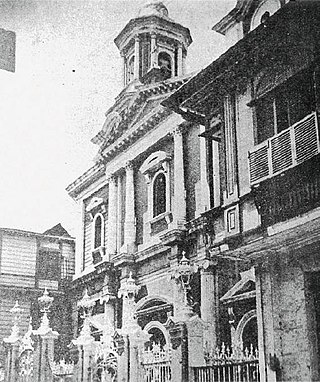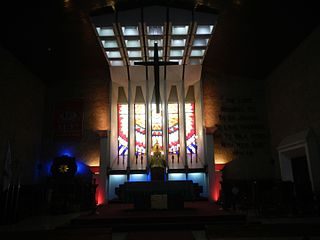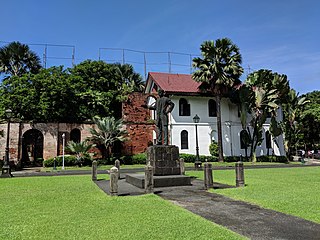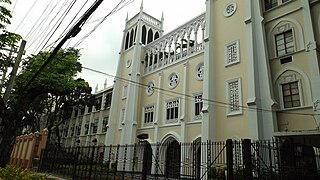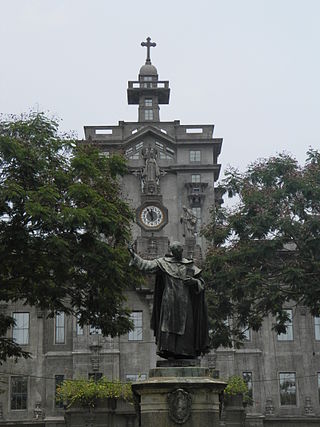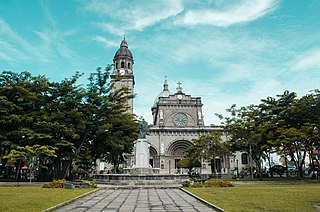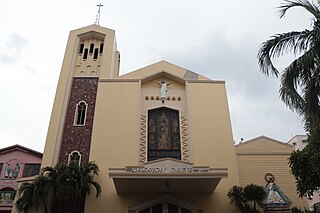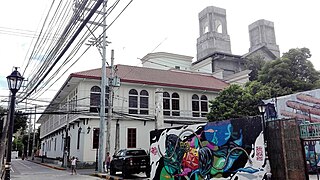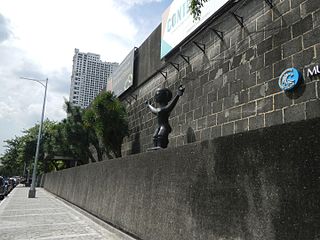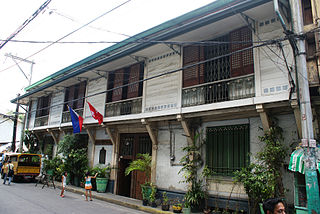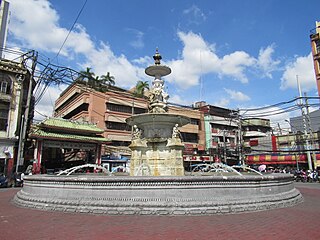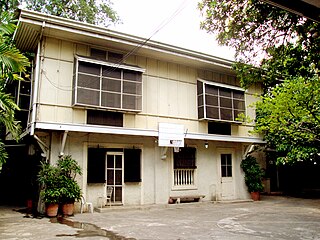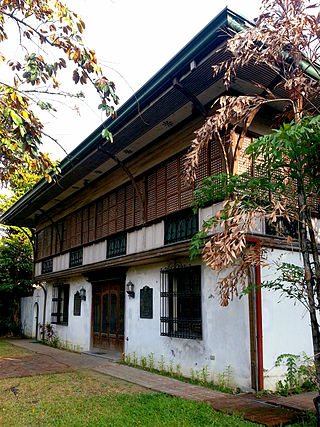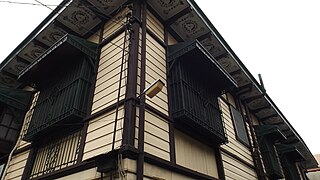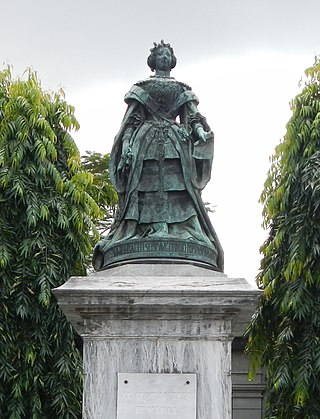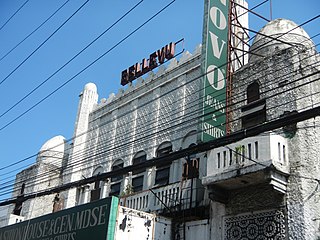47 Sights in Manila, Philippines (with Map and Images)
Legend
Premium Sights
Book tickets, guided tours and activities in Manila.
Guided Free Walking Tours
Book free guided walking tours in Manila.
Welcome to your journey through the most beautiful sights in Manila, Philippines! Whether you want to discover the city's historical treasures or experience its modern highlights, you'll find everything your heart desires here. Be inspired by our selection and plan your unforgettable adventure in Manila. Dive into the diversity of this fascinating city and discover everything it has to offer.
Sightseeing Tours in ManilaActivities in ManilaThe Archdiocesan Shrine of Our Lady of Consolation and Cincture, also known as the Church of Saint Augustine and Immaculate Conception Parish, is a Roman Catholic church under the auspices of the Order of Saint Augustine located inside the historic walled city of Intramuros in Manila, Philippines. Completed in 1607, it is the oldest stone church in the country.
Fort Santiago, built in 1571, is a citadel or castle built by Spanish navigator and governor Miguel López de Legazpi for the newly established city of Manila in the Philippines. The defense fortress is located in Intramuros, the walled city of Manila.
The Minor Basilica and Metropolitan Cathedral of the Immaculate Conception, commonly known as the Manila Cathedral, is a Roman Catholic minor basilica and the cathedral church of the Archdiocese of Manila. It is located in Intramuros, the historic walled city in Manila, Philippines, and is dedicated to the Immaculate Conception of the Blessed Virgin Mary, the principal patroness of the country.
4. Rizal Park
Rizal Park, also known as Luneta Park or simply Luneta, is a historic urban park located in Ermita, Manila. It is considered one of the largest urban parks in the Philippines, covering an area of 58 hectares. The site on where the park is situated was originally known as Bagumbayan during the Spanish colonial period. It is adjacent to the historic Walled City of Intramuros.
5. Ho Chi Minh
Hồ Chí Minh, colloquially known as Uncle Ho, and by other aliases and sobriquets, was a Vietnamese communist revolutionary and politician. He served as prime minister of the Democratic Republic of Vietnam from 1945 to 1955, and as president from 1945 until his death in 1969. Ideologically a Marxist–Leninist, he was the Chairman of the Workers' Party of Vietnam, the predecessor of the current Communist Party of Vietnam.
6. José Rizal
José Protasio Rizal Mercado y Alonso Realonda was a Filipino nationalist, writer and polymath active at the end of the Spanish colonial period of the Philippines. He is considered a national hero of the Philippines. An ophthalmologist by profession, Rizal became a writer and a key member of the Filipino Propaganda Movement, which advocated political reforms for the colony under Spain.
7. San Lorenzo Ruiz
Lorenzo Ruiz, also called Saint Lorenzo of Manila, was a Filipino Catholic layman and a member of the Third Order of Saint Dominic. A Chinese Filipino, he became his country's protomartyr after his execution in Japan by the Tokugawa shogunate during its persecution of Japanese Christians in the 17th century. Lorenzo Ruiz is the patron saint of, among others, the Philippines and the Filipino people.
8. San Sebastian Church
The Minor Basilica and Parish of San Sebastian, also known as the Shrine of Our Lady of Mount Carmel and commonly known as San Sebastian Church or San Sebastian Basilica, is a minor basilica of the Roman Catholic Church in Manila, Philippines. It is under the jurisdiction of the Archdiocese of Manila.
9. Quiapo Church
The Minor Basilica and National Shrine of Jesus Nazareno, commonly known as Quiapo Church and canonically as Saint John the Baptist Parish, is a prominent Catholic basilica and national shrine in the district of Quiapo in the city of Manila, Philippines. It is the home of the Black Nazarene, a dark statue of Jesus Christ said to be miraculous. The basilica is under the jurisdiction of the Archdiocese of Manila under the Vicariate of José de Trozo and its current rector is Rev. Fr. Rufino C. Sescon Jr.
10. Spoliarium
The Spoliarium is a painting by Filipino painter Juan Luna. Luna, working on canvas, spent eight months completing the painting which depicts dying gladiators. The painting was submitted by Luna to the Exposición Nacional de Bellas Artes in 1884 in Madrid, where it garnered the first gold medal. The picture recreates a despoiling scene in a Roman circus where dead gladiators are stripped of weapons and garments. Together with other works of the Spanish Academy, the Spoliarium was on exhibit in Rome in April 1884.
11. Kaysone Phomvihane
Kaysone Phomvihane was the first leader of the Communist Lao People's Revolutionary Party from 1955 until his death in 1992. After the Communists seized power in the wake of the Laotian Civil War, he was the de facto leader of Laos from 1975 until his death. He served as the first Prime Minister of the Lao People's Democratic Republic from 1975 to 1991 and then as the second President from 1991 to 1992. His theories and policies are officially known as Kaysone Phomvihane Thought.
12. Manila Ocean Park
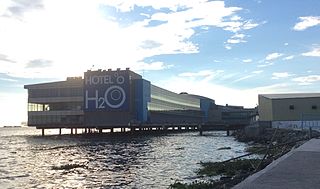
The Manila Ocean Park, is an oceanarium in Manila, Philippines. It is owned by China Oceanis Philippines Inc., a subsidiary of China Oceanis Inc., a Singaporean-registered firm. It is located behind the Quirino Grandstand at Rizal Park.
13. Arch of the Centuries
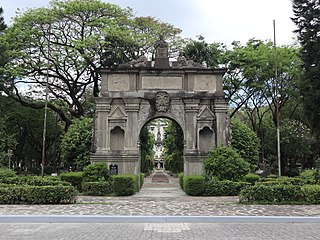
The Arch of the Centuries is a triumphal arch at the Plaza Intramuros of the University of Santo Tomas in Manila, Philippines. Half of the current structure, the side facing the UST Main Building is the ruins of the 17th-century arch door of the first UST campus in Intramuros, while the side that faces España Boulevard is a replica inaugurated in 1954.
14. Binondo Church
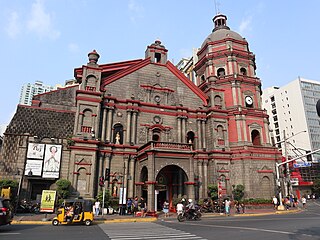
The Minor Basilica and National Shrine of Saint Lorenzo Ruiz, also as Our Lady of the Most Holy Rosary Parish and commonly known as Binondo Church, is located in the district of Binondo, Manila fronting Plaza San Lorenzo Ruiz, in the Philippines. It is under the jurisdiction of the Archdiocese of Manila. The church was founded by Dominican priests in 1596 to serve their Chinese converts to Christianity. The original building was destroyed in 1762 by British bombardment. A new granite church was completed on the same site in 1852 however it was greatly damaged during the Second World War, with only the western façade and the octagonal belfry surviving.
15. Camarín de la Virgen
The National Shrine of Our Lady of the Abandoned, also known as Santa Ana Church, is a Spanish colonial period Roman Catholic church located in the district of Santa Ana in Manila, Philippines. It is under the jurisdiction of the Archdiocese of Manila. The parish was established by the Franciscan missionaries in 1578 under the patronage of Saint Anne. The present stone church was constructed by Vicente Inglés from 1720 to 1725 and was dedicated to its present patron, the Our Lady of the Abandoned. The revered image of its patron was made in Valencia, Spain in 1713 and arrived in the Philippines in 1717.
16. St. La Salle Hall
St. La Salle Hall is an H-shaped four-story academic building built in the Neoclassical style in the Philippines. It was built from 1920 to 1924 to serve as the new campus of De La Salle College due to a lack of space in the previous campus in Paco, Manila, and to accommodate its increasing student population. It served as the grade school and high school building back from when the college was still offering those levels.
17. Rizal Monument
The Rizal Monument is a memorial in Rizal Park in Manila, Philippines built to commemorate the executed Filipino nationalist, José Rizal. The monument consists of a standing bronze sculpture of Rizal, with an obelisk, set on a stone base within which his remains are interred, holding his 2 famous novels "El Filibusterismo and Noli Me Tangere". A plaque on the pedestal's front reads: "To the memory of José Rizal, patriot and martyr, executed on Bagumbayan Field December 30 1896. This monument is dedicated by the people of the Philippine Islands."
18. Santo Niño de Tondo Parish Church
The Archdiocesan Shrine of Santo Niño, also known as Santo Niño de Tondo Parish or Tondo Church, is a Roman Catholic church in Tondo, Manila established by the Augustinians. It is the home of the second oldest Sto. Niño in the Philippines, next to the Sto. Niño De Cebu (1521). The Tondo church is also the first parish church in Luzon erected by the May 3 1572 statute of the Province of the Holy Name of Jesus, with Tambobong (Malabon), Kalookan (Caloocan), Betis (Pampanga), Calumpit (Bulacan) as its first vesitas. It is under the jurisdiction of the Archdiocese of Manila. The church houses an image of the Infant Jesus which originally came from Acapulco, Mexico and was handed over by a wealthy merchant to the Archbishop of Manila at that time, who later turned it over to the parish priest of Tondo, Manila. Since 1572, the image of the Santo Niño has been enshrined in this church.
19. Santa Cruz Church
The Archdiocesan Shrine of the Blessed Sacrament, also known as the Our Lady of the Pillar Church or simply Santa Cruz Parish, is a Mission Revival Roman Catholic parish church in the district of Santa Cruz, Manila, Philippines. It is under the jurisdiction of the Archdiocese of Manila. The church was built when the arrabal (suburb) of Santa Cruz was established by the Jesuits in the early 17th century. The church had undergone many repairs and reconstruction, with the last reconstruction done in the 1950s.
20. Benavides Monument
Miguel de Benavides y Añoza, O.P. was a Spanish Catholic prelate and sinologist who served as the third Archbishop of Manila. He previously served as the first Bishop of Nueva Segovia and was the founder of the University of Santo Tomas in Manila.
21. Our Lady of Remedies (Malate Church)
Our Lady of Remedies Parish, commonly known as Malate Church, is a Roman Catholic parish church in the district of Malate in the city of Manila, Philippines. It is under the jurisdiction of the Archdiocese of Manila. This Mexican Baroque-style church is overlooking Plaza Rajah Sulayman and, ultimately, Manila Bay. The church is dedicated to Nuestra Señora de los Remedios, the patroness of childbirth. A revered statue of the Virgin Mary in her role as Our Lady of Remedies was brought from Spain in 1624 and stands at the altar.
22. San Ignacio Church
San Ignacio Church in Intramuros, Manila, Philippines, was designed for the Jesuits by architect Félix Roxas Sr., and completed in 1899. It was known as their "Golden Dream" but was destroyed during World War II. Its interiors, embellished with carvings, had been designed by Isabelo Tampinco. The church building is currently being was reconstructed, along with its adjoining Casa Misión Convent. It eventually became the home of the Centro de Turismo Intramuros, which the mission house became the site of the Museo de Intramuros.
23. Cathedral of the Holy Child
The Iglesia Filipina Independiente National Cathedral, canonically known as the Cathedral of the Holy Child, is the national cathedral of the Iglesia Filipina Independiente and the seat of the Obispo Maximo, the Church's chief pastor and spiritual head, located in Ermita, Manila, Philippines. It was built in 1969 and was dedicated to the honor of the Holy Infant Jesus, patron of Tondo, Manila. It replaced the first cathedral in Tondo, built in 1905, which was completely destroyed during World War II.
Wikipedia: Iglesia Filipina Independiente National Cathedral (EN)
24. Rizal Shrine
The Rizal Shrine, also known as the Museo ni José Rizal Fort Santiago, is a museum dedicated to the lifework of José Rizal. It is located inside Fort Santiago in Intramuros, Manila, Philippines, beside the Plaza de Armas. Fort Santiago served as barracks for Spanish artillery soldiers during Spain's colonization of the islands. The museum is located in the building where Rizal spent his final night and hid his famous poem Mi último adiós in an oil lamp later given to his sister, Trinidad. The shrine is home to various memorabilia such as the shells he collected in Dapitan, books, manuscripts and artwork.
25. Abbey of Our Lady of Montserrat
The Abbey of Our Lady of Montserrat, or Manila Abbey, is a Benedictine men's monastery located on Mendiola Street in Manila, the Philippines. The monastery was founded by monks from Spain in 1895, in the final years of Spanish colonial era in the Philippines and is dedicated to Our Lady of Montserrat.
26. Miguel de Benavides
The Benavides Monument is a memorial in the University of Santo Tomas in Manila, Philippines built to commemorate the founder of the University of Santo Tomas, Miguel de Benavides. Located in the Plaza Benavides in front of the UST Main Building, the monument consists of a bronze statue of Benavides rising on top of a granite pedestal. The present monument was unveiled in 1946.
27. Plaza de Roma
Plaza de Roma, also known as Plaza Roma, is one of three major public squares in Intramuros, Manila. It is bounded by Andres Soriano Avenue to the north, Cabildo Street to the east, Santo Tomas Street to the south, and General Antonio Luna Street to the west. The plaza is considered to be the center of Intramuros.
28. Plaza Lorenzo Ruiz
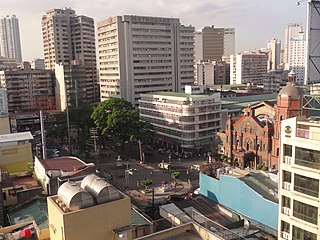
Plaza San Lorenzo Ruiz or Plaza Lorenzo Ruiz is a major public square in Binondo, Manila, bounded by Quintin Paredes Street to the east and Juan Luna Street to the west, parallel to the Estero de Binondo. It is the plaza that fronts the Minor Basilica of San Lorenzo Ruiz, one of the main churches of the City of Manila, and is considered the center of Binondo as a whole.
29. Museo Pambata

The Museo Pambata or the Children's Museum, is a children's museum in the Ermita district of Manila, near Rizal Park, in the Philippines. It is located in the former Elks Club Building, built in 1910, along Roxas Boulevard at the corner of South Drive.
30. Archdiocesan Shrine of Our Lady of Loreto
The Archdiocesan Shrine and Parish of Our Lady of Loreto, commonly known as Sampaloc Church or Loreto Church, is a Roman Catholic church located along Figueras Street in the district of Sampaloc in the City of Manila. It is under the jurisdiction of the Archdiocese of Manila. The church is named after and dedicated to the Virgin Mary and her pilgrimage site in Loreto, Italy where tradition states as the site where the Mary's house was relocated.
31. Anda Monument
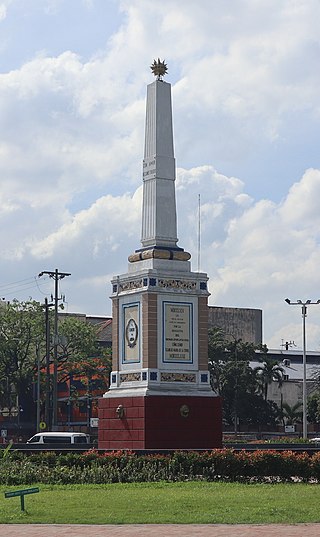
The Anda Monument, often erroneously referred to as the Anda Circle after the roundabout where it is currently located, is an obelisk monument situated on the boundary of Intramuros and Port Area in central Manila, Philippines. It was erected in honor of Simón de Anda y Salazar, Governor-General of the Philippines from 1770 to 1776. The Anda Circle, the roundabout, is an interchange system at the junction of Bonifacio Drive, Mel Lopez Boulevard, Andres Soriano Avenue, and Roberto Oca Street.
32. Museo de Intramuros
Museo de Intramuros is an ecclesiastical museum operated and managed by the Intramuros Administration. It is located at the reconstructed San Ignacio Church and Convent within the historic walled area of Intramuros in Manila, Philippines.
33. Central United Methodist Church
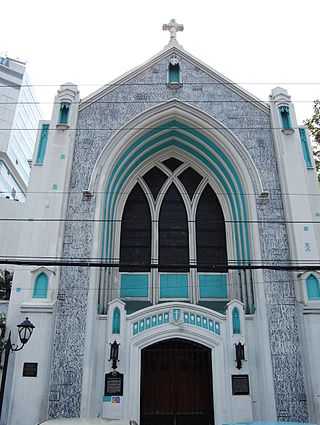
Central United Methodist Church is the first Protestant church in the Philippines, located along T.M. Kalaw Street, Ermita, Manila. Founded on 5 March 1899 during the American Occupation, it was originally named Central Methodist Episcopal Church. The church was originally designed by Juan Arellano.
34. Metropolitan Museum of Manila
The Metropolitan Museum of Manila, also branded as the M, is a non-profit art museum located in Bonifacio Global City (BGC) in Taguig, that exhibits local and international contemporary art. It bills itself as the Philippines' premier museum for modern and contemporary visual arts by local and international artists.
35. Bahay Nakpil-Bautista
The Nakpil-Bautista House is a bahay na bato ancestral home found in the district of Quiapo, Manila, the Philippines. It was built in 1914 by Arcadio Arellano. The house originally sat on two lots, having a total area of 500 square metres (5,400 sq ft).
36. National Planetarium

The National Planetarium, also known as the National Museum Planetarium, was a planetarium owned and operated by the National Museum of the Philippines in Manila. It was a 16-meter (52 ft) dome located in Rizal Park between the Japanese Garden and Chinese Garden on Padre Burgos Avenue in the central district of Ermita. It opened on October 8, 1975.
37. Carriedo Fountain
Carriedo Fountain is a fountain in Santa Cruz, Manila, Philippines. It was built in honour of the 18th-century Capitán General of Manila, Don Francisco Carriedo y Peredo, benefactor of Manila's pipe water system. It was moved three times before its current location at Plaza Santa Cruz in front of the Santa Cruz Church.
38. Plaza Moriones
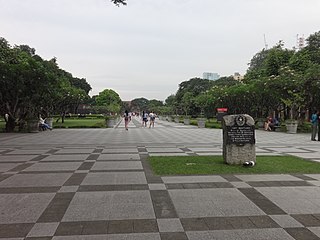
Plaza Moriones is a major public square in Tondo, Manila. Unlike other squares in Manila, the plaza is in the shape of a linear park occupying the central median of Moriones Street, starting at the intersection of Moriones and Juan Luna Streets, and ending at the intersection with Santa Maria Street, bisected by Nicolas Zamora Street in the center. It is named after Governor-General Domingo Moriones y Muralla, responsible for the construction of Manila's sewerage system during his tenure from 1877 to 1881.
39. M. P. Lichauco Heritage House
The Lichauco Heritage House, formally known as the O'Brien-Lichauco Heritage House is one of the oldest surviving houses in Santa Ana, Manila, Philippines. Originally built in 1859, the house was purchased in the late 1940s by a prominent Filipino lawyer and dignitary, Marcial Lichauco from a European family who had fled the Japanese occupation in the Philippines. The house was declared as a heritage house by the National Historical Commission on July 10, 2010. The Lichauco Heritage house is located along Pedro Gil Street. It is the only declared Heritage House in Santa Ana, and one of the only two declared heritage houses in Metro Manila along with Mira-Nila House in Quezon City.
40. Jose P. Laurel Ancestral House
The Jose P. Laurel Ancestral House is a historic house in Manila, Philippines. It is one of the three houses owned by the President of the Second Philippine Republic, José P. Laurel. It is located in 1515 Peñafrancia Street in Paco District. President Laurel purchased the house in 1926 and served as his residence, together with his wife Pacencia Hidalgo and their children, for 29 years before he transferred to his retirement home in Mandaluyong.
41. Plaza de Armas
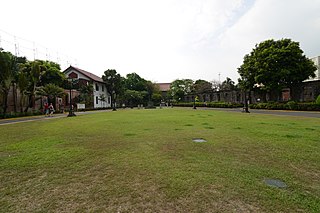
The Plaza de Armas is a public square in Intramuros, Manila. It is the central plaza of Fort Santiago. It is one of three major plazas in Intramuros, the others being the central Plaza de Roma outside the fort grounds and Plaza Moriones, a larger plaza outside Fort Santiago which was once a military promenade before it was closed in the 1863 earthquake that devastated Manila. While Plaza Moriones is outside the walls of Fort Santiago, both plazas are often misconstrued for the other.
42. Francisco Balagtas Theater

The Tanghalang Francisco Balagtas, formerly known as the Folk Arts Theater, was a theater located in the Cultural Center of the Philippines Complex in Malate, Manila. It is a covered proscenium amphitheater owned by the Cultural Center of the Philippines that was a popular venue for concerts during the 1980s and 1990s. The theater, named after Filipino poet Francisco Balagtas, has a seating capacity of 8,458 in 10 sections and features a broad fascia with a single column-to-column span of 80 meters (260 ft). It is the largest single-span structure in the country, with a 100-by-100-meter roof resting on eight monumental columns. In her book "Cultural Center of the Philippines: Crystal Years," Visitacion de la Torre described it as a sheltered plaza with a roof that "appears to float, creating the impression that the building is a dream on one's tender hands."
43. Cobangbang House
The Cobangbang Ancestral House is a heritage house in Manila, Philippines built in 1930 by Aurelio Cobangbang. It is located within the heritage zone of Santa Ana, the only district in Manila which was spared from destruction during World War II.
44. Isabella the Second
The Queen Isabel II Statue is located in front of Puerta Isabel II in Intramuros, Manila, Philippines. It is made of bronze and was funded by donations collected from the city in 1854 and 1855. Ponciano Ponzano, a Spanish sculptor was commissioned to do the work. It was erected amidst festive ceremonies on 14 July 1860 near Teatro Alfonso XII in Arroceros in what is now Plaza Lawton.
45. Rizal Park Flag Pole
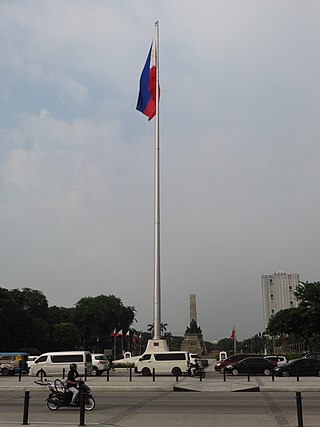
The Independence Flagpole or the Philippine National Flagpole is a 45.72 m (150.0 ft) flagpole located near the Rizal Monument in Rizal Park in Manila, Philippines. It is the highest flagpole in the country.
46. Plaza Moriones

Plaza Moriones is a public square in Intramuros, Manila. Located in front of the entrance to Fort Santiago, it is one of three major plazas in Intramuros, the others being Plaza de Roma located beyond the fort's grounds, and the Plaza de Armas located inside the fort, to which it is often misconstrued for.
47. Bellevue Theater
Bellevue Theater is a small theater located in Paco district, Manila, Philippines. The theater adopted Philippine Islamic imagery as its art deco theme, borrowing inspiration from the tradition of moro-moro theatrical scenography.
Share
How likely are you to recommend us?
Disclaimer Please be aware of your surroundings and do not enter private property. We are not liable for any damages that occur during the tours.
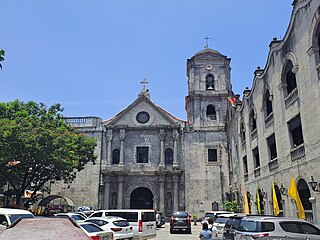
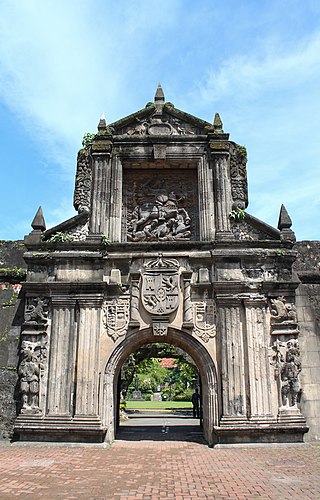
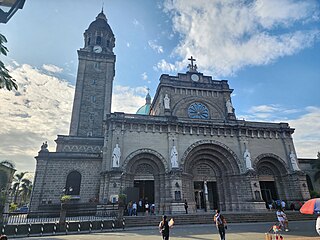
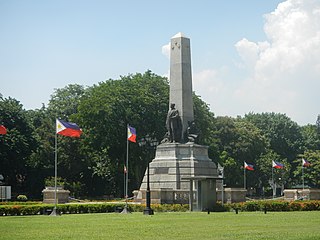
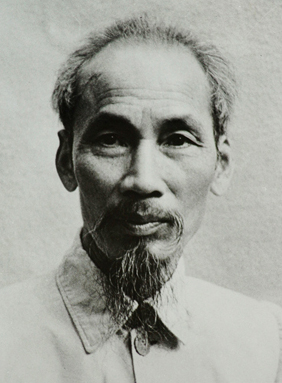
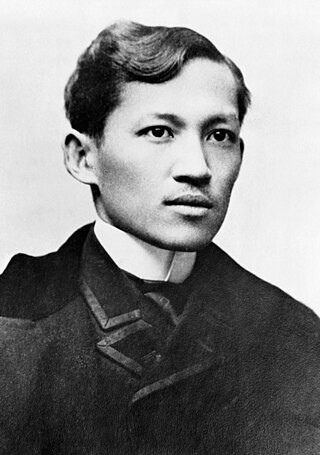
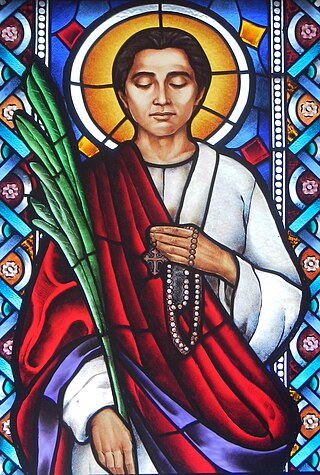
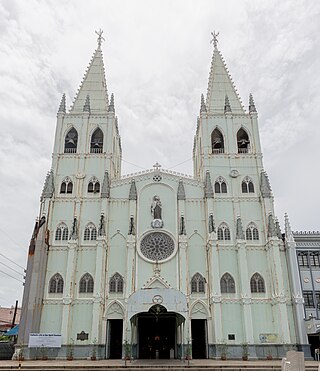
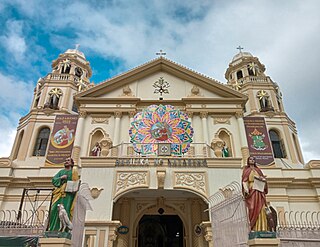
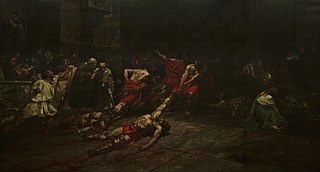
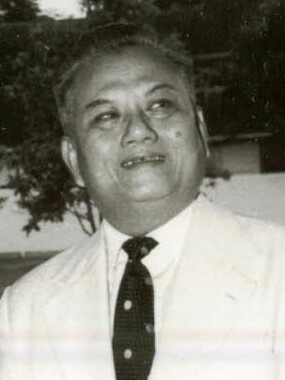
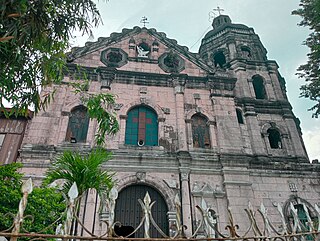
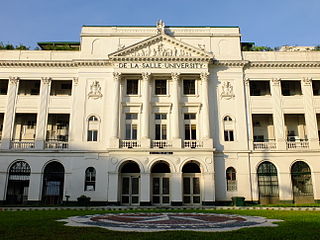
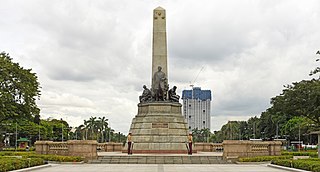
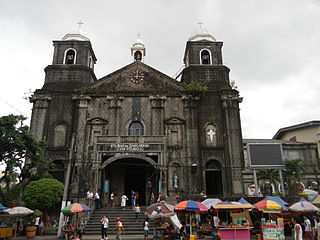
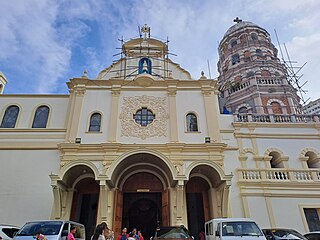
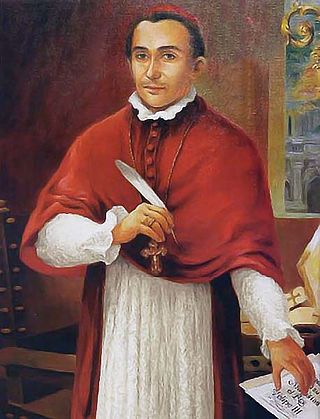
.jpg)
